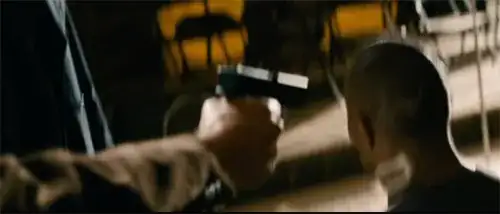
Spoiler alert for those who haven't seen the movie Faster. There is a scene in the movie where the character played by Dwayne "The Rock" Johnson is shot in the back of the head by Billy Bob Thornton with a Glock 22 .40 caliber handgun.
His character is known to have a metal plate in his head from a previous bullet wound which he survived (but we won't go into that one.)
After some Hollywood suspense the Rock emerges, seemingly with no severe injuries associated with his being shot in the back of the head at the range shown above, or at least demonstrating that he is able to function with no noticeable physical/neurological deficits.
His survival is attributed to the claim that the bullet struck the metal plate.
I know this is a fictional scenario, but is it possible in real life?
Are there documented cases of implanted metal plates deflecting/stopping bullets?
Is this scenario based on real science, or is it just Hollywood hyperbole?